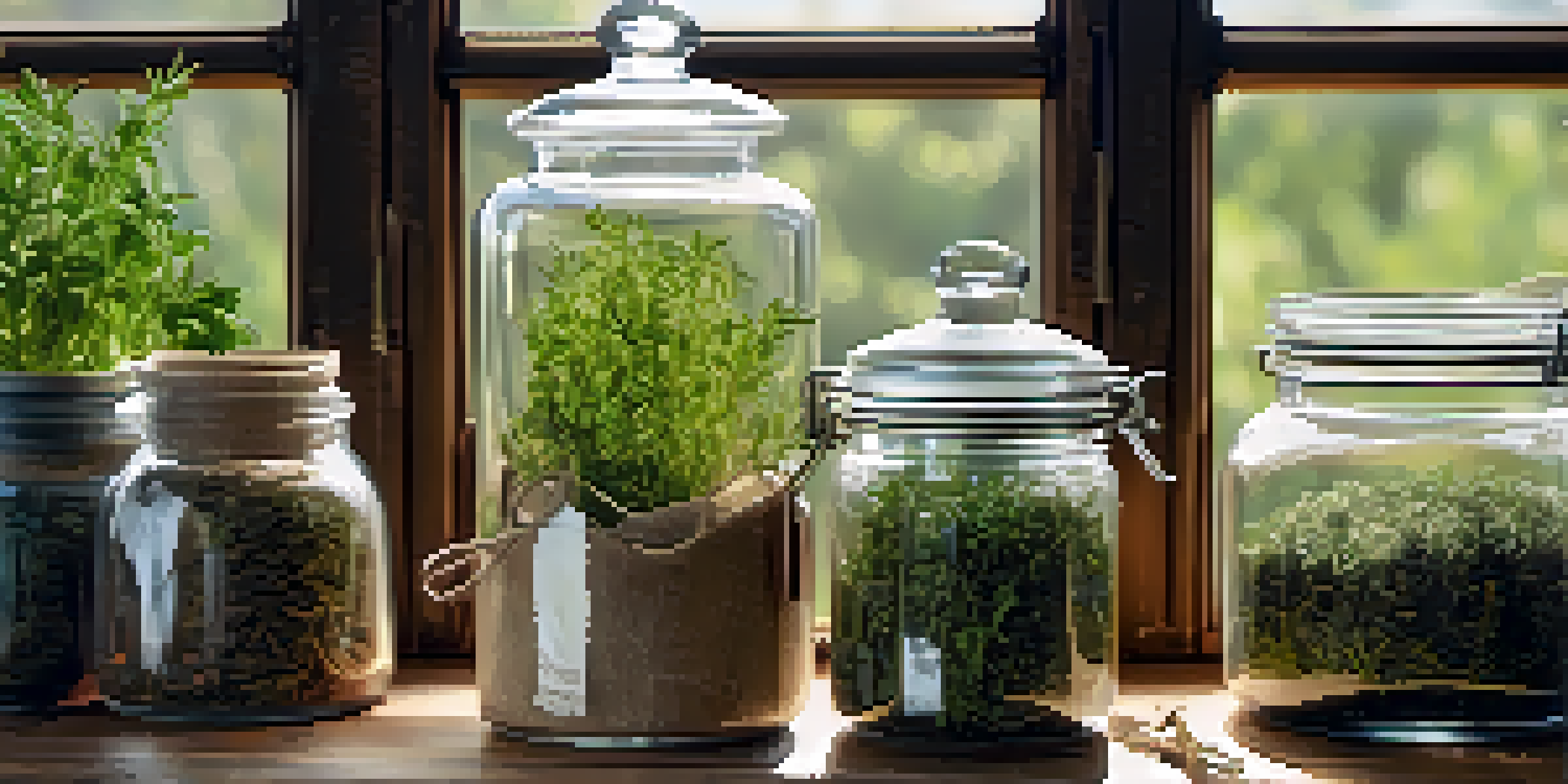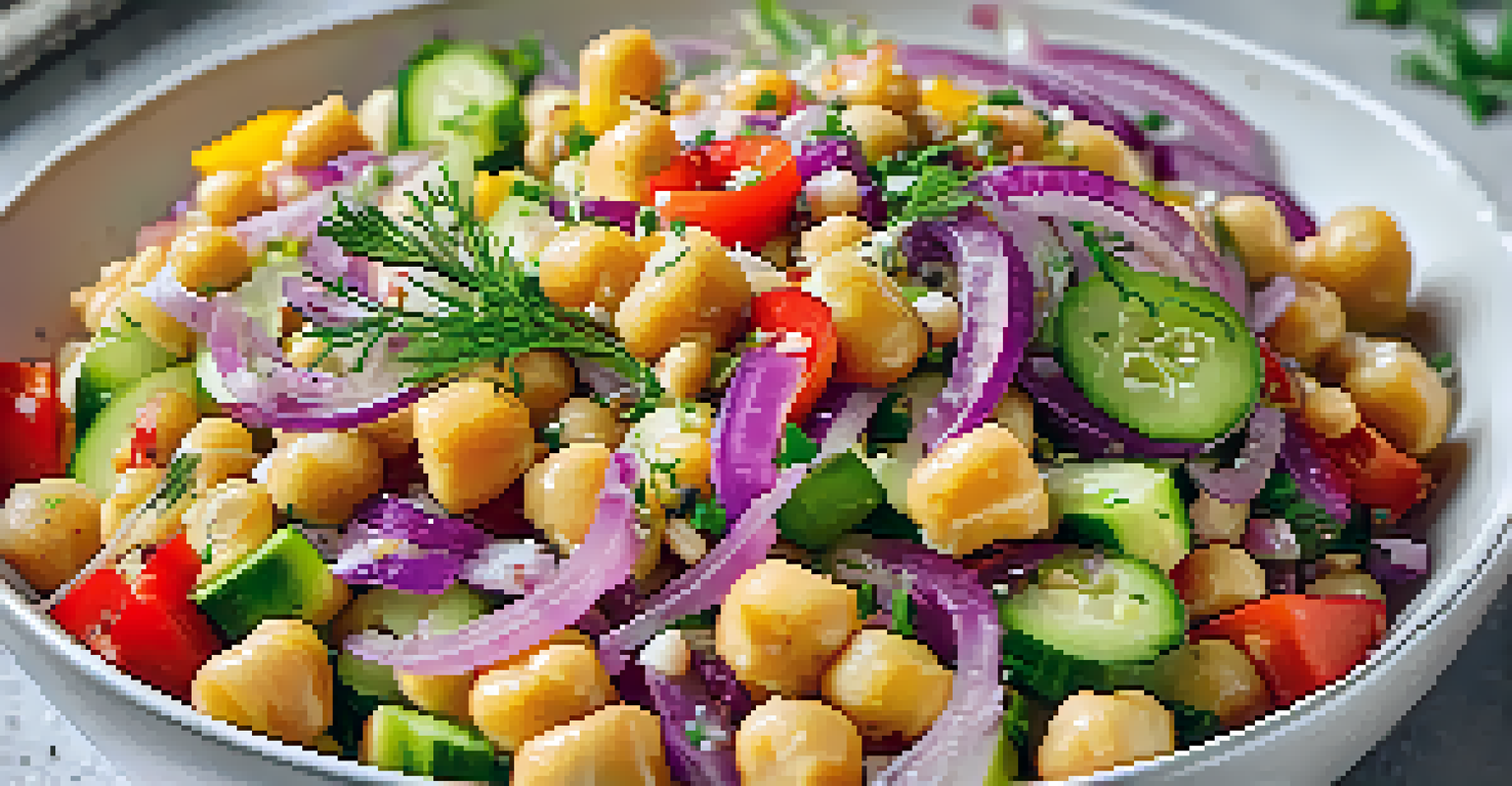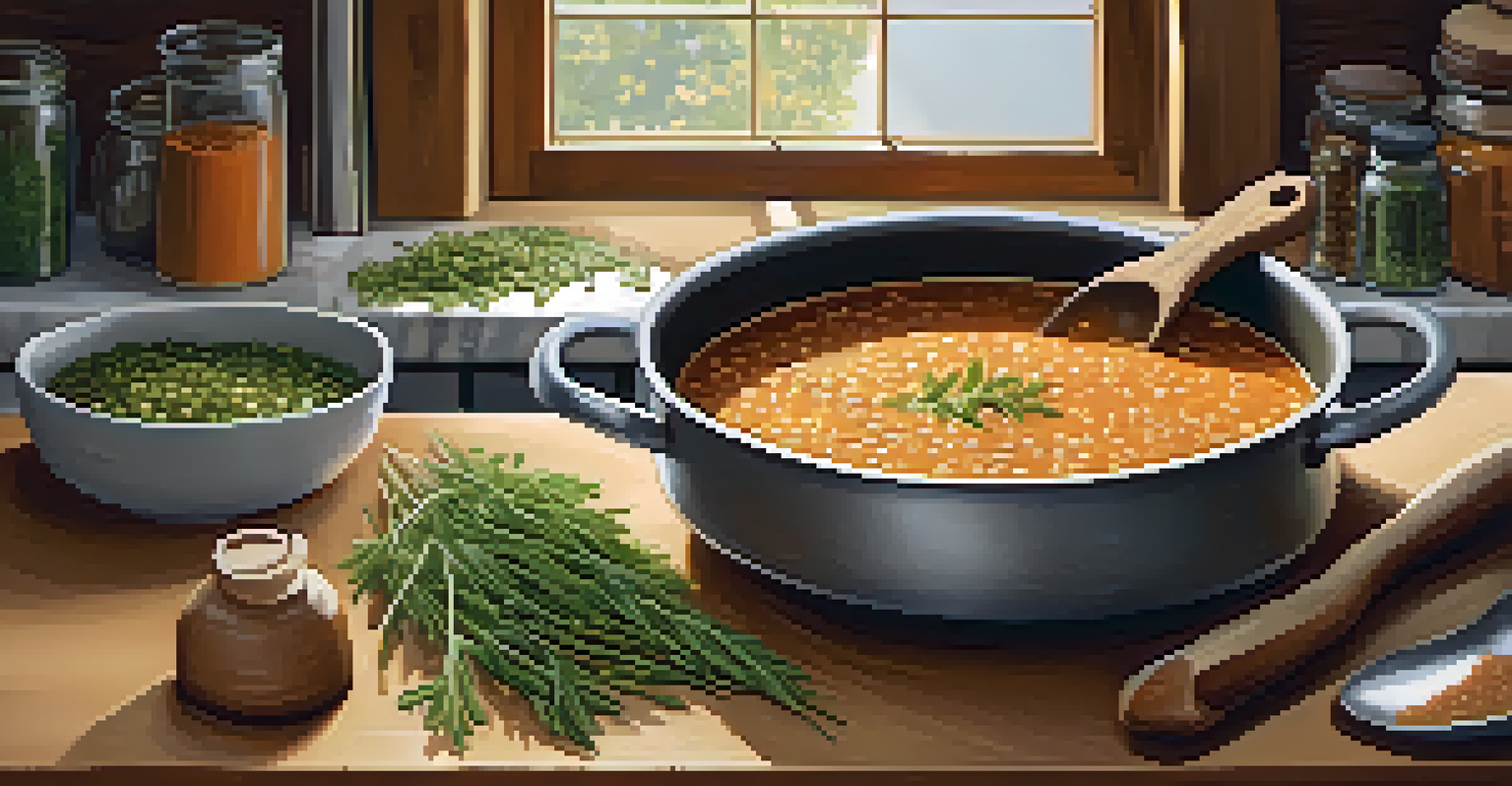A Guide to Dried Herbs: Flavor Boosters for Vegan Meals

Understanding the Magic of Dried Herbs
Dried herbs might seem simple, but they pack a punch when it comes to flavor. Unlike fresh herbs, which can sometimes be mild, dried herbs are concentrated, meaning a little goes a long way. This concentration allows them to infuse your dishes with bold tastes that can elevate even the simplest of meals.
Herbs can be used to flavor a variety of dishes, and they bring out the best in the ingredients they accompany.
Think of dried herbs as the secret weapon in your vegan cooking arsenal. They can transform a basic vegetable stir-fry into a gourmet dish with just a sprinkle. Plus, they are shelf-stable, which means you can always have them on hand for a quick flavor boost whenever you need it.
When selecting dried herbs, consider their potency and the type of dish you are preparing. Some herbs, like oregano and thyme, have robust flavors that hold up well during cooking, while others, like basil, provide a fresh aroma that can enhance dishes when added later.
Essential Dried Herbs for Vegan Cooking
Some herbs are essential staples in vegan kitchens, and knowing which ones to stock can make all the difference. Common choices include basil, oregano, thyme, and rosemary, each bringing its own unique flavor profile. For instance, basil can add a sweet and slightly peppery taste, perfect for pasta or pizza.

Don’t overlook the power of lesser-known herbs, like marjoram or dill, which can add a delightful twist to your meals. Marjoram has a mild, sweet flavor that pairs beautifully with beans and lentils, while dill can elevate vegetable dishes and salads with its fresh, tangy notes.
Dried Herbs Boost Flavor Intensity
Dried herbs are concentrated in flavor, making them an essential tool for enhancing even the simplest vegan dishes.
Experimenting with a variety of dried herbs can help you discover new flavor combinations. Try mixing rosemary with garlic for a savory rub or adding dill to your vegan coleslaw for an unexpected zing.
How to Store Dried Herbs for Maximum Flavor
Proper storage of dried herbs is key to retaining their flavor and aroma. Keep them in a cool, dark place, ideally in airtight containers, to protect them from light and moisture. Glass jars or dark-colored containers are excellent options for preventing exposure.
The art of cooking is the art of using herbs, spices, and oils to enhance the flavor of food.
It's also a good idea to label your containers with the purchase date, as dried herbs do lose potency over time. Most dried herbs can last a year or more if stored correctly, but it's always best to check for aroma and color before using them.
If you notice that your dried herbs have lost their vibrant color or scent, it might be time to replace them. Freshness is crucial for achieving the best flavor in your vegan meals.
Combining Dried Herbs for Unique Flavors
One of the joys of using dried herbs is the ability to mix and match them to create unique flavor profiles. For example, a blend of thyme, rosemary, and sage can evoke the comforting taste of a traditional roast, even in a vegan dish. This combination works great with roasted vegetables or hearty stews.
Another delightful pairing is combining basil with oregano to give your sauces and dressings a more complex flavor. The sweet and savory notes can elevate any tomato-based dish, making it feel gourmet.
Essential Herbs for Vegan Cooking
Stocking staple herbs like basil, oregano, and thyme can significantly elevate your vegan meals with unique flavor profiles.
Don’t be afraid to experiment! Create your own herb blends that suit your taste preferences and culinary style. You might find that a pinch of smoked paprika mixed with dried oregano adds a new dimension to your favorite taco filling.
Using Dried Herbs in Cooking Techniques
When using dried herbs, timing can significantly impact their flavor. For dishes that require longer cooking times, add dried herbs early on to allow their flavors to infuse fully. For instance, adding oregano to a simmering sauce will lend depth and richness.
On the other hand, for quick dishes or those that are served cold, add dried herbs towards the end of the cooking process or just before serving. This technique helps preserve their more delicate flavors, enhancing salads or light pasta dishes without overpowering them.
Ultimately, understanding when to add your herbs can dramatically change the outcome of your dish. Play around with timing to find what works best for you and your favorite recipes.
Flavoring Oils and Vinegars with Dried Herbs
One creative way to use dried herbs is by flavoring oils and vinegars. By infusing olive oil with dried herbs like rosemary or thyme, you can create a delicious cooking oil or dipping sauce for bread. It’s an easy way to add rich flavors to your meals.
Similarly, vinegar infused with herbs can make a delightful dressing or marinade. Try adding dried basil or dill to vinegar and letting it sit for a few days. The result is a tangy, herbaceous addition that can brighten up salads or steamed veggies.
Store Herbs for Maximum Freshness
Proper storage in cool, dark places ensures dried herbs maintain their potency and flavor for longer periods.
Infusing oils and vinegars not only enhances flavor, but it also adds a visually appealing element to your kitchen. Plus, they make great homemade gifts for friends who love to cook!
Creative Recipes to Use Dried Herbs in Vegan Meals
Now that you know how to use dried herbs, it’s time to put them into action! Consider trying a simple chickpea salad with a sprinkle of dried dill and lemon juice for a refreshing lunch. This quick dish is packed with flavor and nutrients.
Another idea is to make a hearty lentil soup seasoned with dried thyme and bay leaves. This comforting meal is perfect for chilly evenings and is sure to impress even non-vegans with its depth of flavor.

Finally, don’t forget about the power of dried herbs in baked goods! Adding rosemary to focaccia or thyme to savory muffins can create unexpected and delightful flavors that will have everyone coming back for seconds.